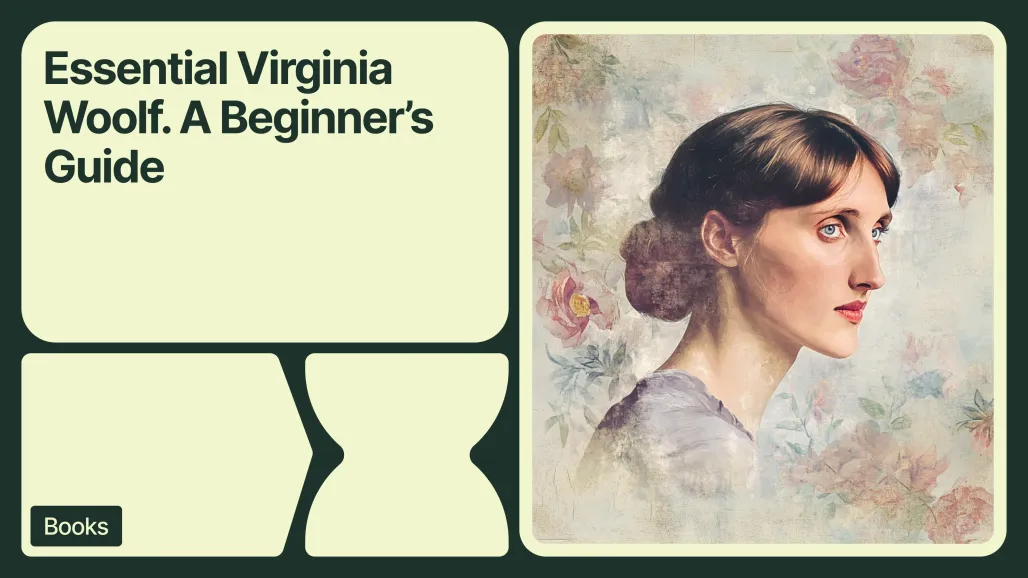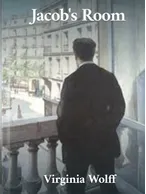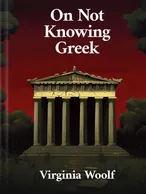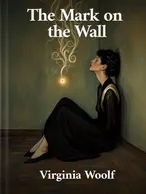Essential Virginia Woolf. A Beginner’s Guide

Discover Virginia Woolf’s essential works and legacy—from Mrs Dalloway to her essays—in this beginner-friendly guide to her writing.
Who Was Virginia Woolf?
📘 1. Mrs Dalloway (1925)
🕯 2. To the Lighthouse (1927)
👤 3. Jacob’s Room (1922)
✍️ 4. The Essays
🧾 5. A Room of One’s Own (1929)
🪶 6. Short Stories
🔍 Why Read Virginia Woolf Today?
📚 Final Thoughts
Virginia Woolf is one of the most important writers of the 20th century—but she can also be one of the most mysterious. Her writing doesn’t always follow a clear plot. Instead, it flows like thought itself, moving from memory to moment, from quiet details to big questions about life, time, and identity.
So where should you start if you’re curious about Woolf? Here’s a simple guide to understanding her work and why it still matters today.
Who Was Virginia Woolf?
Virginia Woolf (1882–1941) was a British writer, critic, and modernist pioneer whose work changed how stories could be told. Born Adeline Virginia Stephen in London, she grew up in a home full of books, ideas, and conversation—her father was a well-known historian, and her mother came from a family of artists.
Though she never went to university, Woolf was highly educated at home and through women’s college lectures, where she encountered feminist and political ideas that would shape her writing. Her life was marked by periods of deep depression and anxiety, but also by bursts of intense creativity.
In 1912, she married writer Leonard Woolf, and together they started the Hogarth Press, which published not only her own work but also modern thinkers like Freud and T.S. Eliot. She was a central figure in the Bloomsbury Group, a circle of artists and writers who rejected Victorian values and explored new ways of living, loving, and creating.
Woolf is famous for using what is known as “stream of consciousness” writing. This introspective style, which echoes inner thoughts and allows for a fluid approach to time, was later copied by many other 20th century writers. Her books, like Mrs Dalloway and To the Lighthouse, offer emotional depth and formal innovation. But her impact wasn’t just literary—it was political too.
In 1929, Woolf published A Room of One’s Own, a bold feminist essay that argued women need money and personal space to write. It became a foundation of feminist literary criticism and remains powerfully relevant. On the eve of WWII she wrote a similar essay, Three Guineas (1938), an even sharper political statement that explored the links between patriarchy, education, and war. In it, Woolf questioned the roles women were expected to play in a society built by men—and asked how they might reshape it instead.
Though Woolf died by suicide in 1941, her voice endures. She opened doors for writers to explore consciousness, memory, and the female experience with honesty and grace.
Fun facts:
- She was one of the first writers to explore mental illness from the inside, giving readers a rare look at how it feels rather than just how it appears.
- She helped launch the careers of major writers through her Hogarth Press.
- Woolf’s pet marmoset was named “Mitz” and is the subject of a little-known biography by her nephew.
- NASA named a crater on Venus after her—Woolf Crater—in honor of her contributions to literature and culture.
📘 1. Mrs Dalloway (1925)
If you only read one Virginia Woolf novel, make it this one. Mrs Dalloway takes place over one single day in London. Clarissa Dalloway is getting ready to host a party—but in her mind, she’s also thinking about her past, the people she’s loved, and what her life really means.

At the same time, we meet Septimus, a young man struggling with trauma after World War I. Their stories never fully meet, but together, they form a deep reflection on life, mental health, and the choices we make.
🕯 2. To the Lighthouse (1927)
This novel is slower and more poetic. It's about a family who spends summers at their house near the sea. But Woolf isn’t really telling a story in the usual way—she’s capturing how time changes people, how art tries to make sense of life, and how we often misunderstand those closest to us.

To the Lighthouse is often called her most beautiful novel. It feels like watching light shift across water—quiet, emotional, and full of meaning beneath the surface.
👤 3. Jacob’s Room (1922)
This was Woolf’s first big step into experimental writing. It’s about Jacob, a young man whose life is told not by him, but by the people around him. We never get a clear picture of Jacob—we just see little pieces, like memories and glimpses.

In the end, Jacob’s Room becomes a story about how hard it is to really know anyone—and how people are shaped by time, war, and silence.
✍️ 4. The Essays
Virginia Woolf wasn’t just a novelist—she was also one of the sharpest literary essayists of the 20th century. Her nonfiction is witty, graceful, and packed with insight. In her essays, Woolf moves freely between personal reflection and cultural criticism, often questioning accepted ideas about literature, history, gender, and art. Her style is fluid but exact, emotional but precise—a reflection of the same stream-of-consciousness approach found in her fiction, but more openly analytical.
A great starting point is On Not Knowing Greek (1925), an essay that looks at the distance between modern readers and the ancient world. But it’s not just about Greek texts—it’s about how we experience literature across time, and how the gaps between cultures and languages can spark both wonder and longing.

Her essays are clear, clever, and full of fresh ideas. They’re a great way to understand how Woolf’s mind worked and how she connected art, life, and history.
🧾 5. A Room of One’s Own (1929)

This passage is one of Virginia Woolf’s most famous—and it perfectly sums up the message of A Room of One’s Own. More than just an essay, it’s a powerful blend of storytelling, history, and argument that asks a simple but revolutionary question: Why have women been largely absent from literary history?
Woolf doesn’t just complain about inequality—she investigates it. She imagines what would have happened if Shakespeare had a brilliant sister with the same talent, but no access to education, space, or independence. The result? That talent would never have had the chance to grow.
In this essay, Woolf argues that creative work requires freedom—both mental and material. For women to write, they need their own physical space, time, and enough financial security to think without fear or interruption.
A Room of One’s Own remains one of the most influential feminist texts in modern literature, encouraging generations of women to claim their voices, their space, and their right to create.
🪶 6. Short Stories
Woolf’s short stories are compact, often strange, and quietly profound. They rarely follow a traditional plot. Instead, they explore the movement of thought, the texture of perception, and the small interruptions that can suddenly shift how we see the world. Many are just a few pages long but leave lasting impressions—like moments suspended in time.
Her stories are a perfect introduction for readers who want to experience her style in smaller doses. They often blur the lines between observation and imagination, between outer events and inner change.
One of the best examples is The Mark on the Wall (1917), a seemingly simple story that begins when the narrator notices a small mark above the fireplace. What follows isn’t action, but thought: a wandering meditation on nature, war, knowledge, social norms, and the need for certainty.

Her short stories are like little thought experiments. They show how she could take something small and turn it into something big and meaningful.
🔍 Why Read Virginia Woolf Today?
Reading Woolf is like learning to listen in a new way. Her writing doesn’t rush. It pays attention to what’s unsaid, what’s hidden, and what’s fleeting. Her books help us slow down and think—about ourselves, about others, and about how we move through the world.
Woolf also spoke out for women, mental health, and artistic freedom long before it was common. She questioned the world around her—and gave us tools to do the same.
📚 Final Thoughts
Virginia Woolf’s work is not always easy, but it is always worth it. Whether you start with a novel, an essay, or a short story, you’ll find yourself stepping into a deeper way of seeing. The more you read, the more her world opens up.
So pick a quiet day, open Mrs Dalloway or The Mark on the Wall, and let her words carry you inward.





